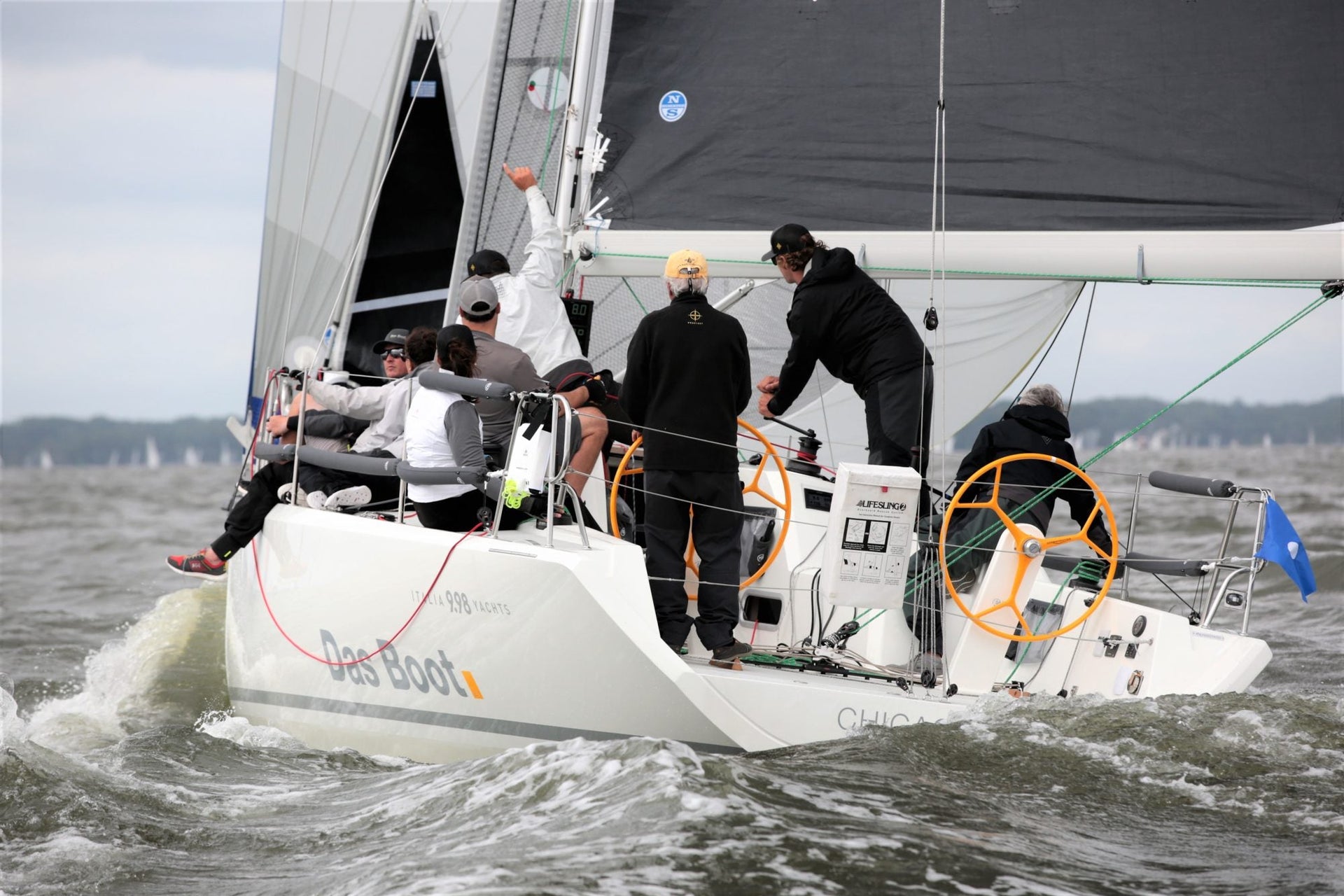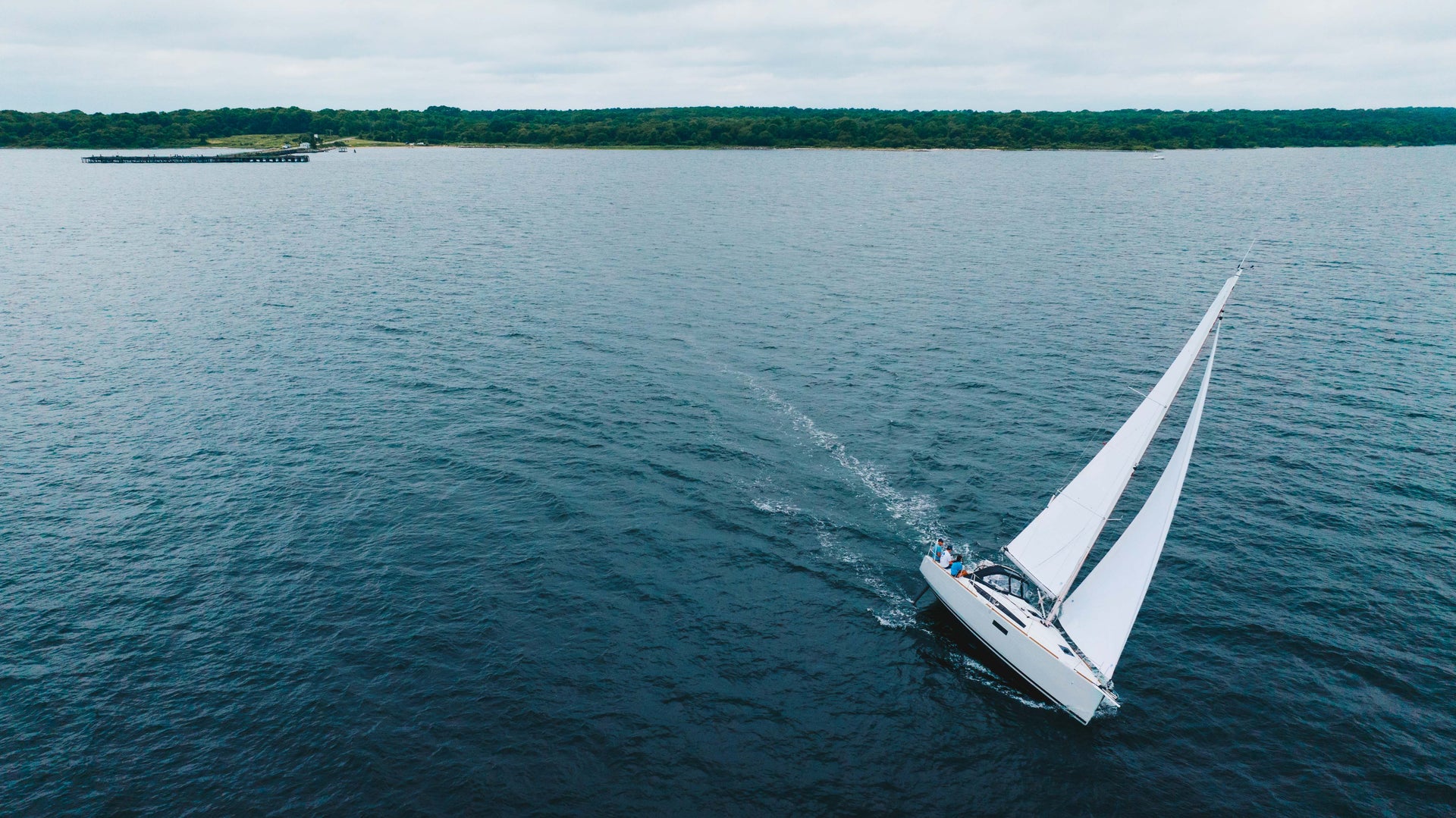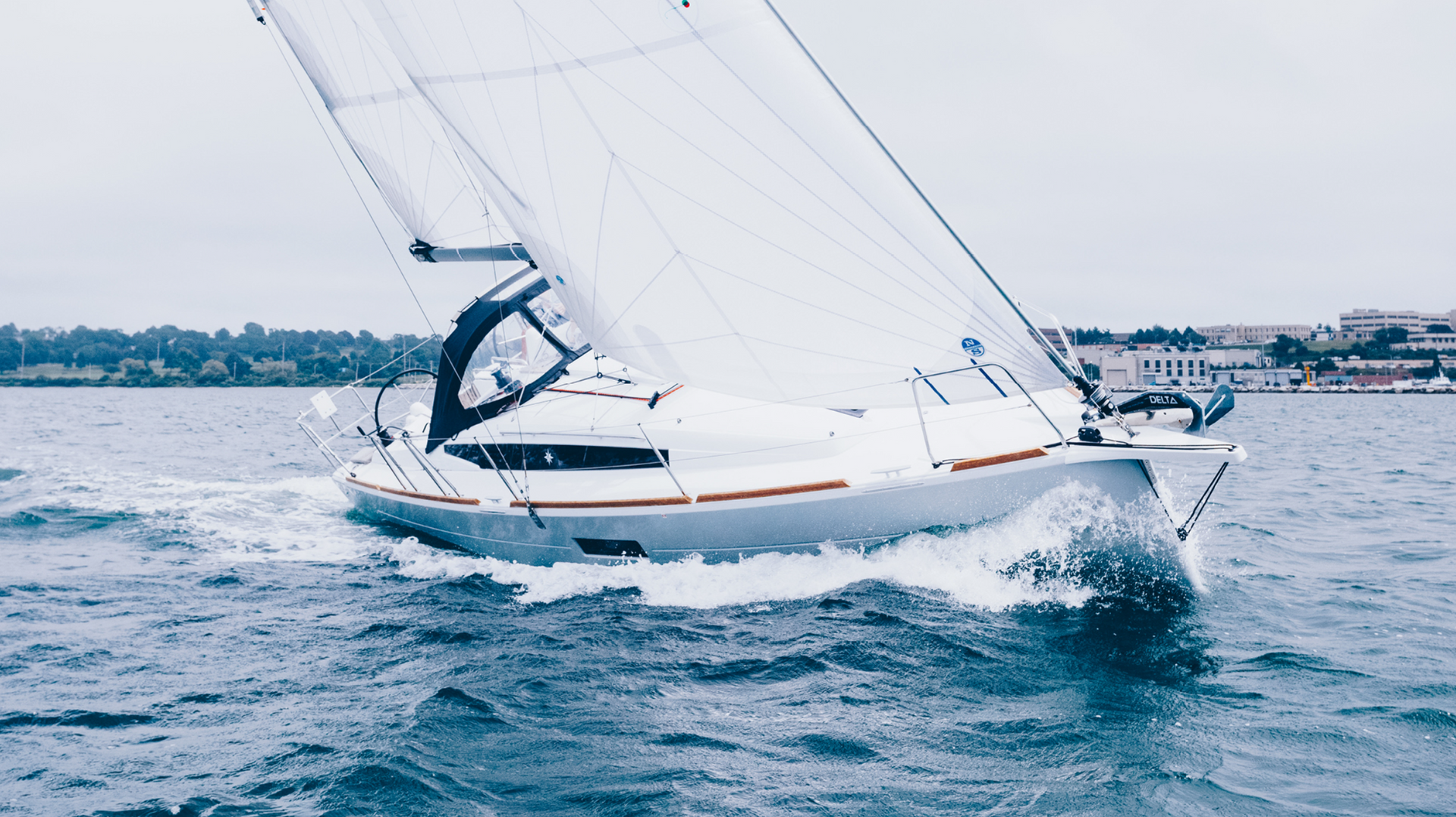NORTH SAILS GLOBAL NETWORK POWERS FAMILY TEAM
NORTH SAILS GLOBAL NETWORK POWERS FAMILY TEAM
Class Experts + Designers From All over the World Aid Success of Annapolis Local Racing Team

North Sails expert Allan Terhune has loads of experience tuning up one design keelboats, but he didn’t have any idea what would make an Italia 9.98 go fast when his in-laws first bought one of the 34-foot racer-cruisers. So he reached out to the incredible global network of North knowledge and asked his colleagues across the pond for help. The result was three wins at the first four regattas Das Boot sailed, in the very competitive Annapolis ORC fleet.
“North sail designer Henrik Søderlund in Denmark had already designed a bunch of sails for these boats,” Terhune explains, adding that the five year old design has won the ORC Worlds a few times. “Rich Bowen and I were able to get a lot of good stuff right away, like the sails chart and polar numbers and tuning. If we’d started from scratch, it would’ve been six months of development.”
Getting a less well-known boat up to speed was a fresh challenge. “There’s only two or three Italia 9.98s in the US right now, but we got sails that fit right from the get-go—because we have this global network, and the Europeans have done a lot more learning than we have. ”
Das Boot’s very first regatta was the Leukemia Cup, a pursuit race—which they won with a family-based crew of seven. They also won an around-the-buoys regatta, and even after breaking a halyard in regatta #3, they came back to finish fifth overall. In early October, the boat won Annapolis Yacht Club’s 24-Hour Doublehanded Race, which Terhune sailed with his wife Cate.

The boat’s versatile inventory starts with a 3Di ENDURANCE 760 mainsail that handles both racing and cruising. Racing headsails include a medium-light and medium-heavy jib (both 3Di RAW 780), a paneled storm jib, and a Helix Code Zero—which Terhune says is the most important sail of all. “They really nailed the sizing. Other Code Zeros are just too big, but we have sailed tighter angles with this one, which is really nice.”
Downwind, there’s a choice of three spinnakers—symmetrical, A1.5, and A3—and Terhune and Cate used all of them to win the light-air 24 Hour Doublehanded. “We did so many sail changes, it was ridiculous. And a lot of fun too.”
Another place Terhune says the North Sails global network really helped was suggestions for modifying the deck layout—an important piece of winning (and enjoying) shorthanded races. “Obviously the guys in Europe combined their experience with the US design in making sure everything was right; the right sails, the right tuning, and all the stuff we needed to win. We couldn’t have done it without all the advice we got from class experts within the North network.”




























